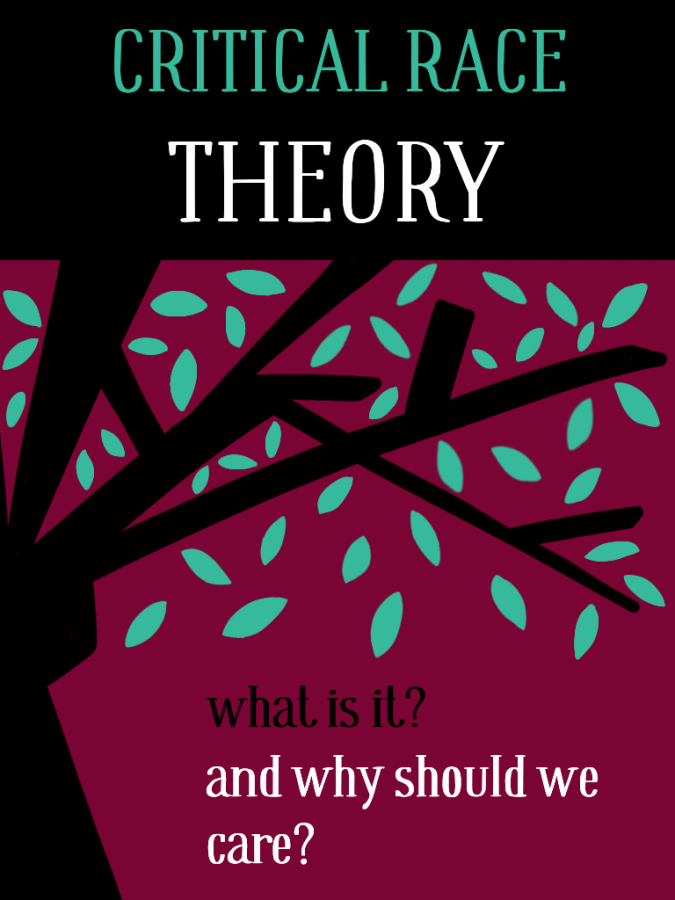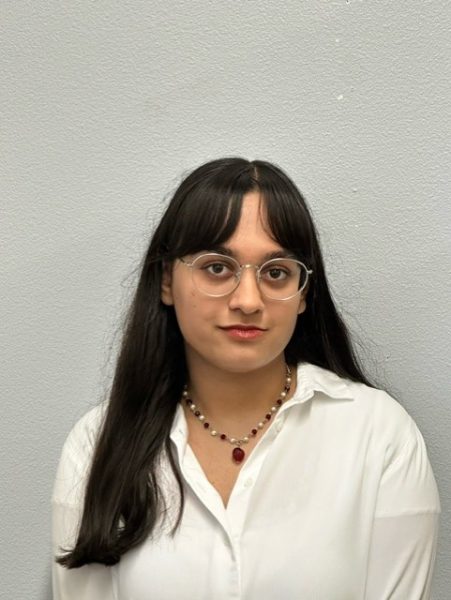Who’s Afraid of Critical Race Theory?
Critical Race Theory has become a buzzword in education- but what is it?
March 23, 2022
The term “critical race theory” has become a controversial phrase among parents, students, and legislators alike in recent years. Over 30 states have passed laws either restricting or outright banning race-related history classes or diversity training.
Those fighting against it claim that the practice “shames” white students and implies that the United States is an inherently racist and sexist country. Those advocating for it believe that it’s a critical part of our history and getting rid of it would be a step backwards. But with all the heavily argumentative standpoints on the issue, most Americans don’t actually know what critical race theory is or how the debate started. So, what even is critical race theory? And why are countless Americans afraid of it?
The origins of Critical Race Theory, or CRT, are often credited to the early writing of Derrick Albert Bell Jr, a professor and civil rights activist. In 1989, workshops at the University of Wisconsin-Madison coined the term as an “intersection of critical theory and race, racism and the law.” Over time, the movement inspired others to apply critical race theory to specific groups, such as the Asian-critical and queer-critical movements, to further analyze critical race theory.
In its simplest form, critical race theory examines how race influences American law & history, and how being a person of color influences life. Another common theme in critical race theory is examining intersectionality. How are the needs of women of color different than men of color? What about queer people of color? How do we ensure that all of these people have their needs fulfilled? Viewing our government and society using critical race theory helps us address and solve these problems.
When CRT is applied to teaching history, it’s meant to examine events in history from multiple perspectives, and this often includes the discussion of events involving injustice or persecution. Often, we’re tempted to sweep the parts of history under the rug that we don’t want to remember. But as uncomfortable as they may be to discuss, things like the Civil Rights Movement or the Holocaust are still parts of our history.
We keep discussing these historical events for a reason- so we don’t repeat the mistakes we’ve made in the past. From the removal of statues to the more recent instances of banned books, the debate as to what parts of our history we want to remember has become a popular topic. Many people would say that an objective, unbiased retelling of events is one of the most beneficial ways to learn about our history- so why are so many people against it?
There’s a lot of misinformation around the topic, causing people to get angry about facts and figures that aren’t even real. One of the most common parts of the debate that are skewed out of proportion is the age of students being taught. Many people claim that young children are being taught about the horrors of their history and that America is inherently an unjust country. “Critical Race Theory teaches kids to hate our country and to hate each other” says Ron DeSantis, Governor of Florida. However, most outright critical race theory courses are taught at universities- often when pertaining to law and civil justice. While elements of CRT can be found in middle and high school courses, its ideas are far more simplified for younger minds.
One of the most popular ways for young students to learn about critical race theory is through English or History classes while analyzing text. First, teachers present the text, which could be anything from a history textbook to a piece of literature. They will then bring a question to the table about how the event during the time period the text is set in influences the story. Students will analyze the question and discuss their thoughts with each other, the teacher in the room serving as a moderator and occasionally bringing new information to the discussion. While this method of teaching is more watered-down to fit a younger audience, these exercises greatly benefit building critical thinking skills in students.
Despite these efforts to bring CRT to the school level, most students are still very unfamiliar with this subject. When a class of freshman were offered a survey asking their thoughts about critical race theory, only nine were willing to participate. The majority of students who participated reported that they had no idea what CRT was, with only a third of the total group being aware of it. Furthermore, most students said that while they didn’t know what critical race theory was, they assumed it was a bad thing. These negative conclusions are more likely than not formed from the way most news outlets discuss the subject. They provide plenty of opinions, but no explanations- and this keeps everyone young or old from establishing an informed opinion on it.
Critical Race Theory is meant to examine history and modern-day life while taking into account the experiences of people of color- not to undermine the struggles of others or shame young children for the wrongdoings of those that came before them. Students aren’t being forced to learn about the horrors of injustice and war on the first day of third grade. Instead, their instructors will use media and discussion when they deem their students ready.
But above all, CRT is not giving today’s kids a pessimistic view of their country. CRT is all about looking at the world around us, acknowledging how race has influenced it, and learning about how we can make it better. Whether it be through reading a “banned” book, attending a seminar, or just listening to others- make an effort to learn about people that aren’t quite like you. It’s not nearly as scary as you might think.


